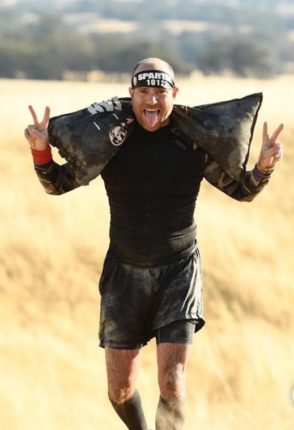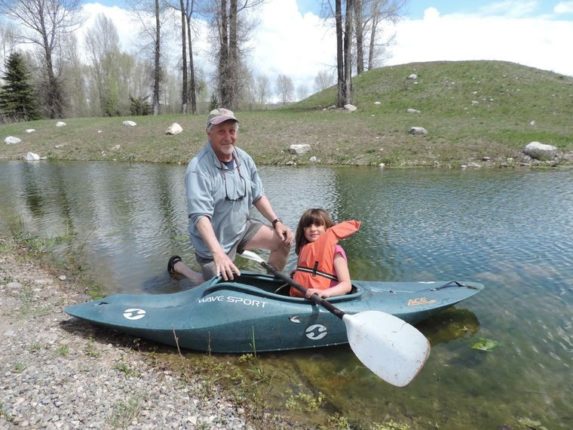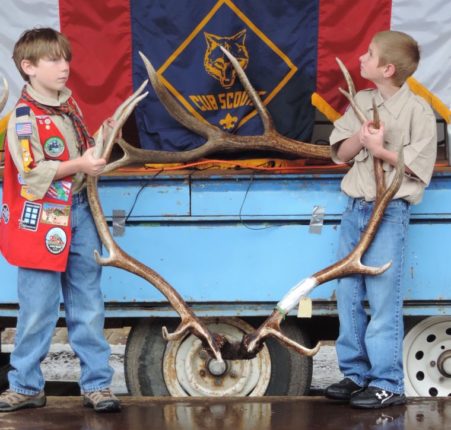What’s not to love about a Spartan obstacle course race with competitors scrambling across monkey bars, slogging through mud pits, slithering under barbed wire and leaping over fire as a finale.
For John Dixon, 47, a financial adviser in Pocatello, the challenges and camaraderie of Spartan races have compelled him to compete since 2016.
“Friends at Gold’s Gym suggested I try one,” said Dixon, who had run marathons. “It was different from anything else I’d ever done. You’re not doing just one thing. You’re running, climbing, jumping, crawling, lifting, or swimming. The courses are usually in the mountains, too, so you’re surrounded by the beauty of nature.”
Since Spartan Racing Inc. began organizing the competitions nationwide in 2010, they have become increasingly popular because of the mental and physical sense of accomplishment racers feel when they finish.
Founder Joe De Sena, an adventure racer, launched the courses to develop people’s physical strength and mental fortitude and to ultimately “rip you from your comfort zone,” according to Spartan.com. “If you think you can’t do it, you’re wrong. Get to the starting line and show yourself what you are capable of.”
The physical strain is eased by the camaraderie among competitors.
“Races have such a positive energy,” Dixon said. “You start with the pledge and saluting the flag. One of the mottos is ‘No Spartan left behind,’ so people help each other at obstacles. They’re all ages and come from all walks of life.”
They strive to follow the Spartan creed, which has little to do with muscle and more with a mindset. True Spartans give generously, push their minds and bodies to their limits, master their emotions and learn continuously, according to Spartan.com. They know their flaws as well as strengths, prove themselves through actions not words and live every day as if it were their last.
Dixon is not alone in his Spartan enthusiasm, estimating dozens of people in the area race regularly.
Racers pick from three main divisions: a Sprint with about 20 to 23 obstacles in 3 to 5 miles, the Super with 24 to 29 obstacles in 8 to 10 miles, and the Beast with more than 30 obstacles in 12 to 14 miles.
People of all fitness levels are welcome, either as an elite racer who is competitive or an open entrant who simply wants to finish. A course is offered for children, too.
Many Spartans set a goal of earning a trifecta, completing a race in each division in a year. After notching a trifecta in 2016, Dixon set a higher goal and earned a double trifecta in 2017.
“The highlight of last year’s season was competing in the Spartan World Championship in September in Lake Tahoe, California, at the Squaw Valley Ski Resort,” he said.
Dixon said Spartan obstacle courses are becoming popular “because there’s more to it than a race. A lot of people are there to overcome something in their lives, whether loss of a loved one, surviving cancer or dealing with divorce.”
At the end of a race, competitors sign a message board to share the reasons they race.
“I compete as an uplifting example to my family to become physically fit and have fun doing it,” said Dixon.
Having completed a double trifecta and the world championships last year, Dixon has set a new goal, competing in the Ultra Beast at the world championship at Lake Tahoe this fall.
“The Ultra Beast is 33 miles and 50-plus obstacles,” he said. “This is the one of the biggest challenges and longest races you can do. So if you’ve done your double trifecta and are looking for more of a challenge, the Ultra Beast is definitely the next level.”
Dixon said races are offered year-round.
“You can get on the website and find a race almost every weekend,” he said.
Like most Spartans, Dixon said he knows he will feel exhausted yet elated after crossing the finish line and will be eager for his next race.




